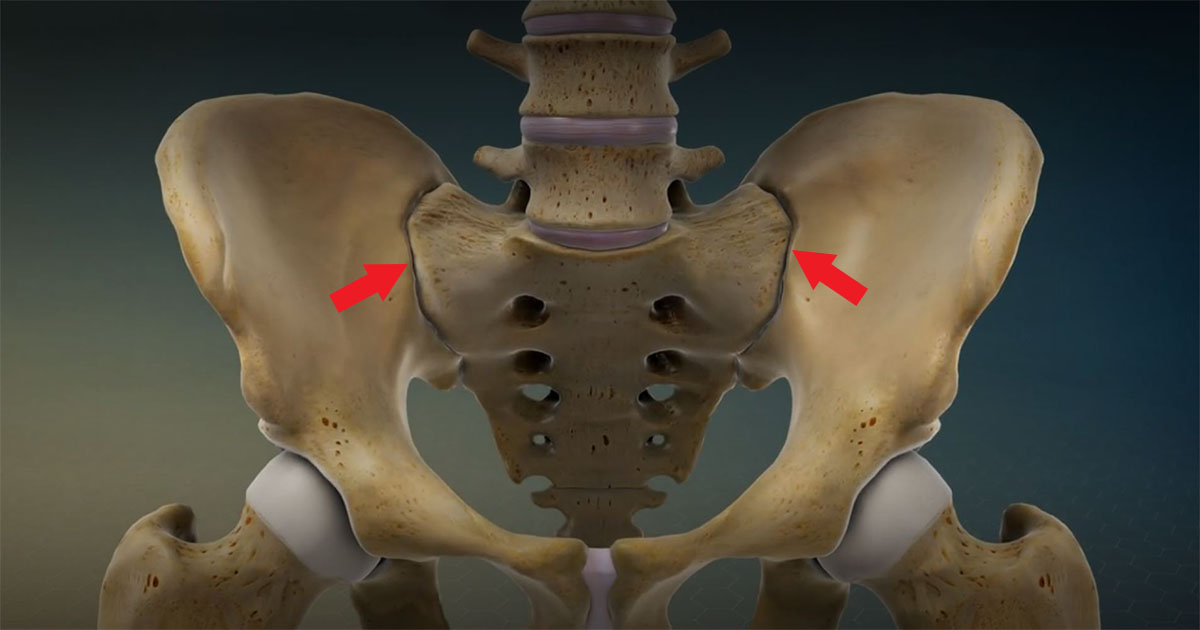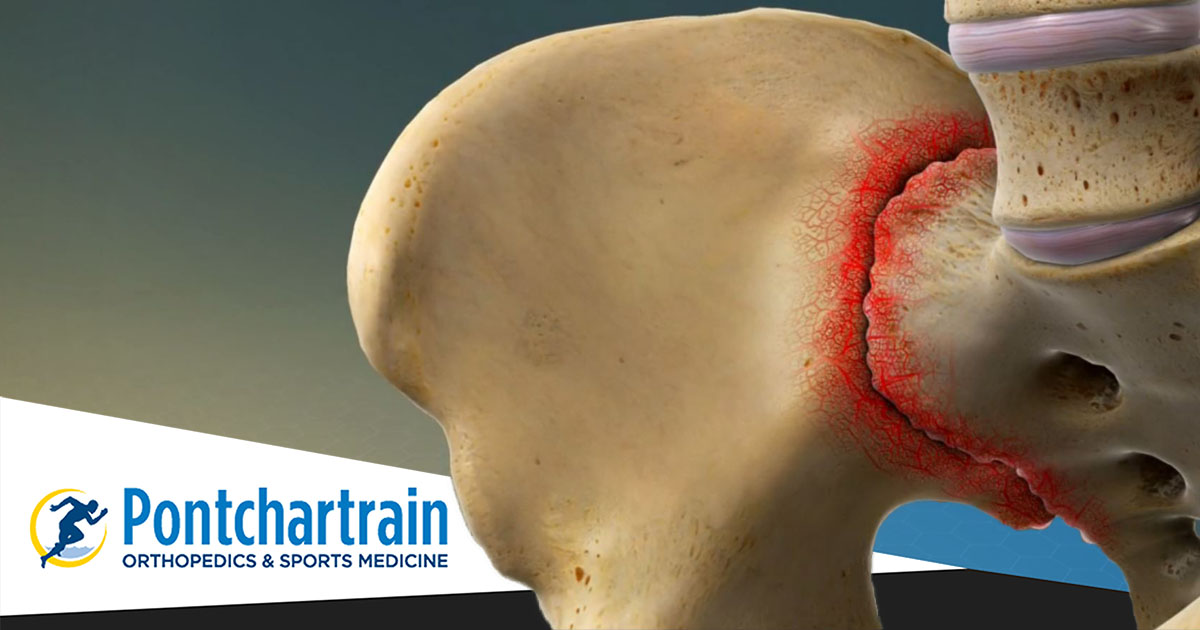Sacroiliac Joint Pain
What is Sacroiliac Joint Pain?
Sacroiliac joint pain occurs in bony structures in your lower back called the sacroiliac joints (also called "SI" joints). They are located above your tailbone and below your lower vertebrae. The SI joints link your pelvis to the lower spine. Viewing the patient’s back, the SI joints are located beneath the “dimples of Venus” on the lower back.

As their name implies, SI joints can flex slightly in any direction and are stabilized by a network of ligaments and muscles in the pelvic girdle. The SI joints are highly specialized joints that permit stable, flexible support to the upper body. They are essential for effectively transferring loads between the spine and legs and play a major role in absorbing impact when walking and lifting.
What Causes Sacroiliac Joint Pain?
As we age our bones become arthritic and ligaments stiffen. SI joints have free nerve endings that can cause chronic pain if the joint degenerates or does not move properly. Traumatic injury, arthritis, or irritation of the supporting ligaments from walking with a limp are common causes of sacroiliac joint pain, or sacroiliitis (say-kroe-il-e-i-tis).
What are the Symptoms of this Condition?
SI joint pain ranges from mild to severe (acute) depending on the extent and cause of the dysfunction. SI joint pain typically starts in your lower back or buttock. It can radiate to your hip, groin, and thigh. Your leg may feel weak, numb, or tingly. You may notice SI joint pain when you are sitting, or lying down. You may also notice it when you are walking or climbing stairs. Or when you try standing after sitting.
Usually, SI joint pain is felt only on one side. But if both joints are affected, you may feel pain on both sides. In many cases acute SI joint pain occurs suddenly and usually resolves within several days to weeks. SI joint pain is considered chronic if it persists for more than three months. Chronic SI joint pain may be felt all the time and may increase with certain activities.
Diagnosing SI Joint Pain
Sacroiliac pain can mimic other conditions, such as a herniated disc or hip problem. An accurate diagnosis from a medical exam is important to properly determine if the source of pain is the result of sacroiliitis. The exam will include an evaluation of how your pain presents when you stand or move in different positions, and if you feel tenderness over your SI joint.
X-ray, CT, or MRI imaging studies may be ordered to help in the diagnosis and to check for other problems related to your hip or spine.
When sacroiliitis is suspected, a diagnostic fluoroscopic guidance injection of a local anesthetic and corticosteroid medication may be given into the SI joint. Your pain level is evaluated before and 20-30 minutes after injection, and monitored over the next week. Sacroiliitis is confirmed if your pain level decreases by more than 75%. If your pain level does not change after the injection, it is unlikely that the SI joint is the cause of your low back pain.
What Treatments are Available?
Treatment depends on the cause of your pain. You may benefit from SI joint stabilization exercises in physical therapy, or out-patient ultrasound guided injections into the joint. Patients suffering from chronic sacroiliitis often benefit from a procedure called Radio Frequency Ablation (RFA), where electricity is used to destroy the painful nerve ending in your joint. If these are not effective you may need surgery to stabilize the SI joint.
Why Seek an Evaluation for SI Joint Pain?
Sacroiliac joint pain can feel similar to hip and spine conditions. An accurate diagnosis is crucial to creating a treatment plan that gives you maximum relief. If you have chronic or worsening back pain, you should be evaluated. A number of conditions may cause back pain, some of them very serious. Our physicians can provide an accurate diagnosis and a treatment plan to help you get relief. Contact us today to find out what treatment options are right for you. We can serve you in our conveniently located Boutte, LA clinic and our Metairie, LA clinic.

